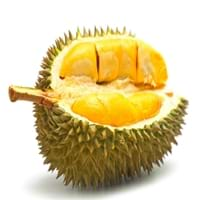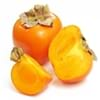Health Benefits
Anti depressant, Boosts immune system, Cancer prevention, Heart care, Reduces stress
Anti-oxidant properties, Boosts immune system, Skin rejuvenation, Strengthening of bones
General Benefits
Anti oxidant properties, Anti-inflammatory properties, Boosts immune system, Controls blood pressure, Controls blood sugar levels, Digestive aid, Flu treatment, Strengthens bones
Antiseptic properties, Cures headache, Removes waste from kidney
Skin Benefits
Anti-aging benefits, Brightens and lightens complexion
Hydrates skin
Hair Benefits
Promotes longer and healthier hair, Protects hair
Good conditioner
Allergy Symptoms
Diarrhea, Headaches, Hives, Nasal congestion, Red rash, Runny nose, Vomiting
Chest pains, Rhinitis, Wheezing
Side Effects
Affects blood glucose levels, Nausea, Stomach pain
Unknown
Best Time to Eat
Along with meal, As a snack in the late afternoon, Don't consume at night and before bed, Morning time (before lunch)
As a snack in the late afternoon, Don't consume at night and before bed, Eat the fresh ones, avoid mixing with any other foods, don't eat after meal., Morning time (before lunch)
Vitamin B5 (Pantothenic Acid)
Vitamin C (Ascorbic Acid)
Vitamin E (Tocopherole)
Not Available
Vitamin K (Phyllochinone)
Not Available
Lutein+Zeaxanthin
Not Available
Phytosterol
Not Available
Calories in Fresh Fruit with Peel
Not Available
Calories in Fresh Fruit without Peel
Not Available
Calories in Canned Form
Not Available
Calories in Jam
Not Available
Type
Tree fruit, Tropical
Tree fruit, Tropical
Season
Monsoon
Early summer, Early winter, Late fall, Late spring
Varieties
D24, D99 (Gob kecil), D123 (Chanee), D145 (Beserah), D158 (Gan Yau), D159 (Monthong), D169 (Tok Litok), D188, D189, D190, D163 (Hor Lor) and D164 (Ang Bak)
Rongrien, Chompu, Rapiah, Bingjai and Lebak Bulus
Color
Green
Coral red, Yellow
Inside Color
Yellow
Greyish-white
Taste
Creamy, Sweet
Sour, Sweet
Origin
South-Eastern Asia
Unknown
Grows on
Not Available
Trees
Soil Type
Clay
Clay, Loam
Climatic Conditions
Hot, Humid
Humid
Facts about
- 1 kg of durian contains 1350 calories which may cause weight gain.
- It may have a hyperthermic effect on the body, making you feel warmer.
- Study shows that durian has an ability to reduce infertility in men & women.
- Oils extracted from its seeds is used to make soaps and candles.
- 'Rambut' means hairy in Malay.
- It makes the best hair mask.
- Seeds are edible and healthy too.
Top Producer
Thailand
Thailand
Other Countries
Indonesia, Malaysia, Philippines
Africa, India, Indonesia, Malaysia, Philippines, Sri Lanka
Top Importer
China
Singapore
Top Exporter
Thailand
Thailand
Botanical Name
Durio zibethinus
Nephelium lappaceum
Synonym
Lahia Hassk
Rambota
Subkingdom
Tracheobionta
Tracheobionta
Division
Magnoliophyta
Tracheophyta
Class
Magnoliopsida
Magnoliopsida
Subclass
Dillenhidae
Rosidae
Order
Malvales
Sapindales
Family
Malvaceae
Sapindaceae
Species
D. zibethinus
N. lappaceum
Generic Group
Not Available
Not Available
Compare Durian and Rambutan
It is important compare Durian and Rambutan as both the fruits have a different nutritional value. Their comparison can be done on the basis of their vitamin and mineral content, calories, benefits as well as characteristics, making it easier for us to choose the best fruit for our diet. Their general health benefits are as follows:
Durian Benefits: anti oxidant properties, anti-inflammatory properties, boosts immune system, controls blood pressure, controls blood sugar levels, digestive aid, flu treatment and strengthens bones.
Rambutan Benefits: antiseptic properties, cures headache and removes waste from kidney.
Fruits are also used as a remedy for various hair problems. The hair benefits of Durian are: promotes longer and healthier hair and protects hair and hair benefits of Rambutan are: good conditioner. Some fruits are known to cause allergic reactions. The allergy symptoms of first fruit are: diarrhea, headaches, hives, nasal congestion, red rash, runny nose and vomiting and the symptoms of second fruit are: chest pains, rhinitis and wheezing. Get sorted Durian vs Rambutan comparison with the help of fruit comparison tool by fruitvs.com.









